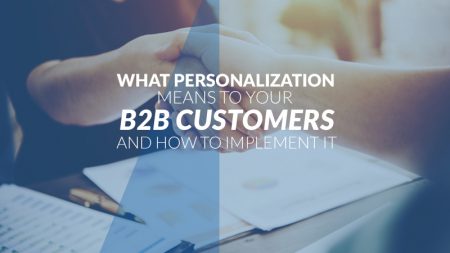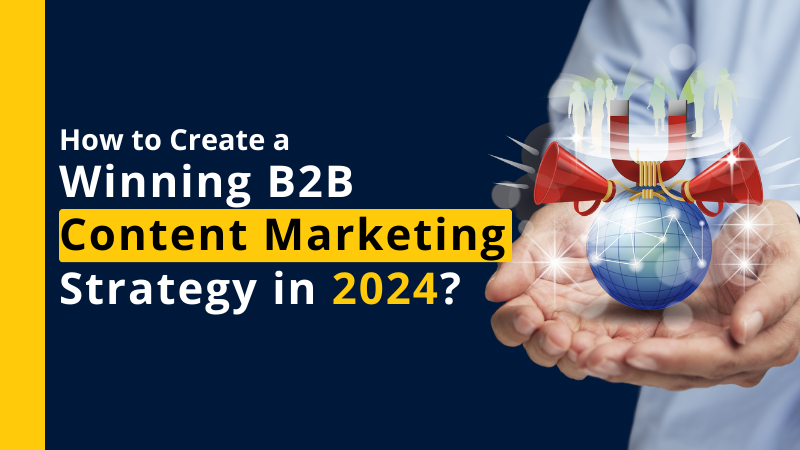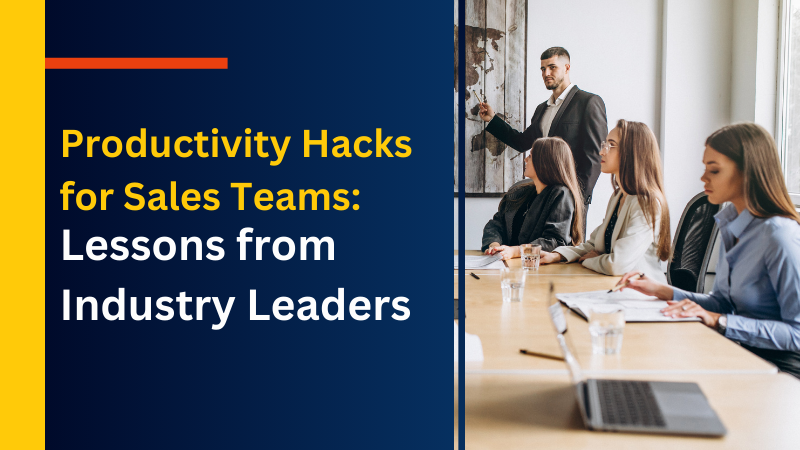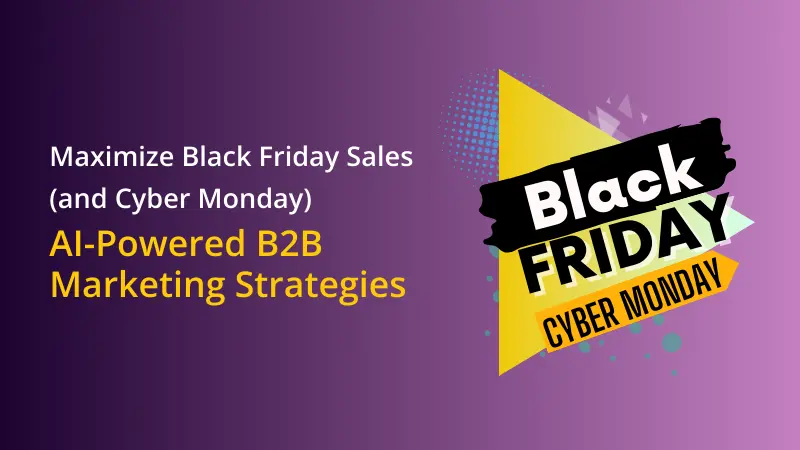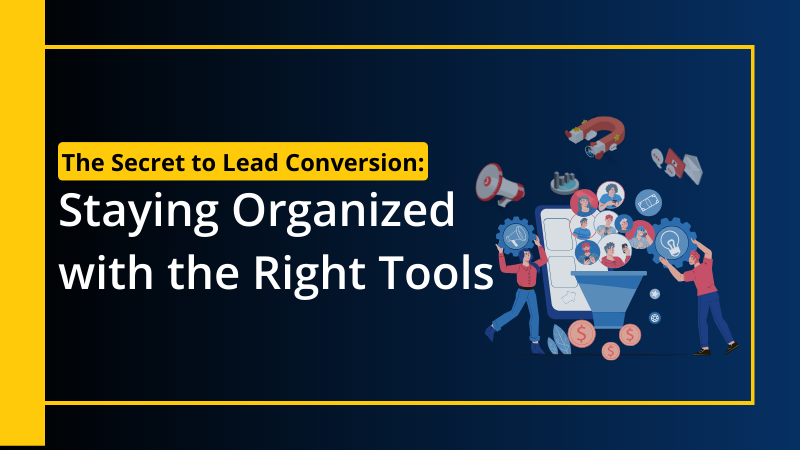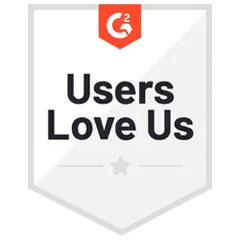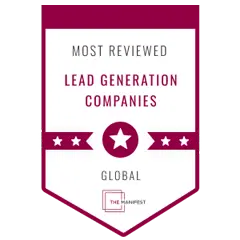Running a business where dozens of prospects can visit your website any moment, it seems perfectly natural to take a generic approach and implement the ‘one size fits all’ strategy. Entrepreneurs have long thought that personalization wasn’t important for B2B niche because their customers were direct and goal-oriented.
An average B2B organization still believes that only a traditional customer requires engagement and retention strategies. Luckily enough, it looks like the community is gradually realizing that B2B customers are people too with their personal needs and preferences!
A vast majority of people ultimately prefer a personalized online experience, so you need to indulge them and prepare a tactic that fits these requirements. In this post, we will show you what personalization means to your B2B customers and how to implement it.
The Benefits of B2B Personalization for Your Business
By definition, personalization is a means of meeting the customer’s needs more effectively and efficiently, making interactions faster and easier and, consequently, increasing customer satisfaction and the likelihood of repeat visits.
To put it simply, personalization means tailoring your offers and communication so as to fit the needs of each client individually. Why is this so important for your business? There are so many benefits of personalization in B2B environment, but we will name only the most important:
- Deliver the right message: B2B personalization strategies enable you to deliver the right message to the right customer.
- Perfect timing: You are not only able to tailor messages but also to send them in real-time, choosing the perfect moment to deliver information.
- Choose the right channel: Some B2B clients prefer email marketing, while others put more emphasis on social media or phone conversations. With personalized service, you know exactly where to find potential clients.
It may seem like a small dose of improvements, but it actually makes a huge difference for your company. Various studies already proved the benefits of B2B personalization:
- By 2020, more than half of consumers expect companies to predict their desires before they contact to make an offer.
- Around 80% of consumers are ready to repeat make another purchase if they have been personalized to their previous engagements with the brand.
- 75% of entrepreneurs claim “dynamic and personalized content” across channels is very important for the business.
Related: Approaching Psychographic Segmentation In B2B Marketing
B2B Personalization Most Efficient Practices
Now that you’ve seen the logic behind B2B personalization and the benefits it could bring you, it is time to learn more about the most efficient practices in this field. Here we will explain four strategies you should implement to get the most out of your personalization efforts.
Accumulate and analyze data to enable personalization
A B2B sales cycle is long and complex. It consists of various touchpoints and your prospects may leave at each stage of the process. For this reason, you need to design an adaptive user experience in order to educate and inform potential clients rather than sell them your services.
First of all, your job is to remember user-related information to acknowledge returning visitors. Then you need to understand their behavior in order to deliver the right content. Thirdly, you should help B2B clients with relevant suggestions and automated recommendations, thus making them surprised and delighted to engage with you.
But how exactly can you do this? The beginning is simple – you need to accumulate and analyze user-generated information. Various online tools can help you with that, but Google Analytics is the easiest way to learn about your prospects.
Using this business intelligence tool, you can distinguish between new and returning visitors, understanding their browsing habits, see what kind of content they prefer, and discover a myriad of other details relevant to the user journey. Combine it with data coming from email campaigns and social media and you’ll get yourself a good starting point for the B2B strategy.
Related: Utilize a Data-Driven Approach to Generate Technology Leads
Conduct the B2B customer segmentation
Each industry has its own peculiarities, so you need to adapt segmentation practices so as to match your demands. However, you will notice three frequently used models in B2B customer segmentation:
- Segmentation based on firmographics: You can categorize B2C consumers by demographics, while B2B clients have firmographic traits. These include features such as locations, business size, industries, managerial levels, titles and functions, etc.
- Segmentation based on tiering: This is a proactive method of B2B customer segmentation as you target prospects based on concrete expectations. Instead of industry-wide clients, you will be looking for B2B customers who have enough potential to generate a certain amount of profit or cooperate with you at least 12 months or so.
- Segmentation based on needs: Unlike tiering, segmentation based on needs takes into account what your clients want from you. It gives you the opportunity for micro-segmentation, but you should draw the line to avoid total diversification.
Danish Water Technology launched a project entitled The Future Water City that gives B2B clients the opportunity to check out each phase of the project separately. They designed an interactive map that leads prospects seamlessly through the Water Manager, enabling simple and intuitive navigation. It’s a perfect example of segmentation that leads B2B customers to a more personalized online experience.
Related: The 5 F’s of Data Hygiene for Deeper Sales Conversations [VIDEO]
Provide B2B Clients with Multiple Touchpoints
Most people forget that the official company website is not the only place where B2B prospects could try to reach you. Besides this channel, there are many other touchpoints such as mobile apps, social media, or live chat. In case you neglect these channels, you risk losing too many customers along the way. This is exactly why only 30% of companies are now satisfied with their current personalization efforts.
Try to make a multiple-touchpoint structure to improve user experience and allow your marketing team to create customized content. In such circumstances, each touchpoint would bring something new to your prospects and you would probably increase upselling and cross-selling results, as well as the number of repeat purchases.
Related: Understanding Multi-channel, Cross-channel and Omnichannel Marketing
Guide your customers through real experience
The best thing a company can do for B2B clients is to show them how products or services work in real-time. This kind of tactic takes user experience to a whole new level and there are numerous examples that prove this point.
For instance, Blackbaud University offers nonprofit training and fundraising courses. The organization developed two online calculators to measure productivity. That way, their prospects can catch a glimpse of the course and understand how it helps them to improve their professional capabilities.
It’s a simple trick but highly efficient if you want to provide B2B clients with a personalized online experience. Therefore, you should always try to guide customers through your services and let them feel the benefits of doing business with your company.
Related: 5 Types of Interactive Content and How They Can Boost Your Engagement
Conclusion
Although B2B clients have traditionally been more rational and data-driven than B2C consumers, they are still people who prefer tailored relationships. For this reason, you need to understand what B2B personalization means and how to implement it.
In this post, we showed you the benefits of personalization and practical tips on how to make use of it in the real-life environment. Have you ever used any of these solutions before? Do you have other suggestions to share with our readers? Feel free to let us know in the comments and we’ll be glad to discuss it with you!

